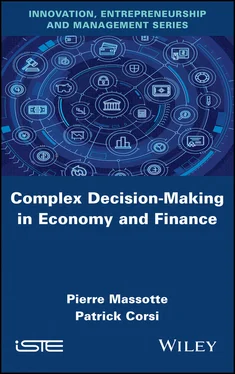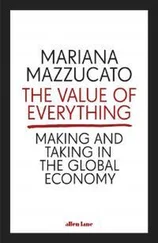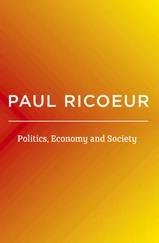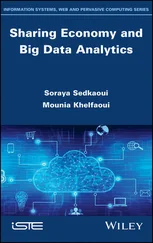Autonomy and self-organization are essential characteristics of future production systems. Combined with these concepts, and to produce customized products, with a high reactivity to meet demand, it is important to implement new principles of planning, scheduling, piloting and control. However, limiting the ability of systems to be flexible and adaptable through the improvement of their operation or production control functions leads us to play on other potentialities such as interactions between functions, autonomy and system dynamics. This is mainly due to the increasing difficulties encountered in solving problems of scheduling, synchronization and development of the right ranges: as everyone knows, it is indeed very difficult to determine good scheduling in multi-product processes and multi-processes under conditions of nonlinearity and uninterpretable discontinuities.
Of course, there has long been an attempt to simplify processes and improve their flexibility by developing increasingly complicated strategies and algorithms (in a study conducted in 1993 in the industry, more than 430 scheduling algorithms corresponding to specific problems had been identified, around the production control community, by our team in IBM. Some of them are now considered as algorithms for AI; this demonstrates the many various approaches in machine learning and solution elaboration in planning and scheduling). The question then is: should we continue to try to solve each new problem in a traditional way? How far will we go in the level of complexity to be understood? Can we not work on new and more original approaches? Can we not take better advantage of the intrinsic properties of the systems concerned? How can we exploit new architectures or properties? Here again, we are tackling a new paradigm, which will be part of the familiar domains to come and which are called: fractal factory, virtual factory, agile manufacturing, etc.
Future production systems will not only have to be adaptable, but also have to be able to change the configuration of their own structure as well as the structure and functional principles of the production system itself. Thus, production systems will have to be reconfigurable, self-reconfiguring or scalable, which implies notions of modularity, autonomy and self-organization. This means that they are able to allocate, by their own means, the right resources, the right control and monitoring system, assign the right tasks at the right time to each cell and define the right priorities.
1.5.3. The contribution of chaos and self-organization
As we have just read, we emphasize here that the challenges and problems posed by the evolution of economies and industry require the implementation of new metaphors and new organizational models. We know, for example, that the most reactive systems can only evolve and change if they have self-organizing properties. Open adaptive systems are the most promising because they are based on a constant improvement of the principles of optimization and evolution as found in Nature. For example:
– a living natural system is equipped with autonomy. Intelligence is distributed and control, instead of being centralized (“top-down” approach), will be achieved from the bottom up (“bottom-up” approach);
– a system evolves and adapts through diversity, i.e. through transformations, disruptions, disturbances and so on. It is a notion that is strongly linked to that of chaos;
– the most adaptable systems are those that are naturally in unstable situations and in constant search for balance;
– the notion of collective intelligence is based on the emergence of orders and self-organization, which is a key mechanism.
It should be recalled that self-organization can be seen as a corollary of chaos. The problem is therefore how to exploit and implement it. By analogy and with reference to our work, a production system must be managed using devices that use simple rules and/or meta-knowledge. Usually, the practical approach consists of an exhaustive inventory of the various constraints and associated actions and then exploiting them using various optimization techniques (linear programming, deductive systems, heuristics, etc.). In fact, industrial systems, like any social group or living organism, are not governed by a complicated function or a list of programs that follow a specific sequence. In a semiconductor assembly line with 140 operations, production management decisions could be described by only 15 rules. However, the behavior of such systems is unpredictable and non-reproducible. Like genes, we must code the rules to be applied, define organizations or configurations, resources to be implemented, but not focus on describing how to perform the tasks. Similarly, meta rules will be defined that will describe an overall objective as well as the space of functioning or freedom. A production system will then be an open space, with agents and autonomous entities able to freely perform tasks according to a set of predefined constraints.
Within this space, the notion of deterministic chaos can be expressed and bring diversity. This is all the more true since it is a confined space and it is under these conditions that an evolutionary self-organization can be set up. Thus, self-organization consists of delegating and multiplying responsibilities, breaking down tasks and performing them simultaneously at different levels. The notion of unpredictability then takes on its full meaning, but this is not a matter of chance. The industrial system under consideration is then subjected to permanent recomposition phenomena, differentiation, redundancy of operations, inhibition, etc. The very way of carrying out a task may evolve, but, this is important, there is “irreversibility”: the system’s reactions will always be different and this calls into question the content of the orders, which will also change according to the situation and the nature of the agents.
These few notions lead us to define [MAS 91] a two-level production management system:
– the microscopic level: this corresponds to the operational level of a production system. It includes control algorithms at the cell level, and allows local optimizations and scheduling and sequencing at the equipment level. It also manages the execution of all elementary tasks. At this level, the rules of the internal functioning of the autonomous cell and the nature of the links that will be established with close neighbors (and will be at the origin of an emerging order or configuration) will also be defined;
– the macroscopic level: this includes general strategies, as well as global objectives and meta rules. The operating and performance limits of the system and each cell will be determined, as well as the types of links to be established between the cells. It will also define how the network will operate and its exchange capacities, based on demand requirements, as well as on product specifications, constraints and models. This makes it possible to maintain unity of action and coherence of the entire production system.
As we can see, the mesoscopic level sometimes appears in conventional production management systems and disappears in some ERP (Enterprise Resources Planning) or integrated systems. It is no longer necessary since the microscopic level is reinforced by more autonomy and self-organization possibilities. The usual control scheme is therefore simplified; whole categories of problems are no longer dealt with since it is left to the system to solve them according to its internal dynamics. We will no longer speak of a hierarchically organized and managed production system, but of an autonomous network. However, the principles and concepts of fully distributed and autonomous networks are not yet applied. As a result, the development of predetermined, planned and fixed control and management systems is being challenged. This also explains why the obsolescence of conventional “ad hoc” approaches and systems will always be rapid and ERPs will have to evolve.
Читать дальше












